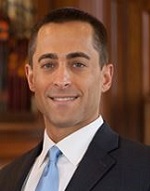| |
Profile
(Center for Environmental Studies)
Professor Polsky is a geographer specializing in the Human Dimensions of Global Environmental Change. He has completed four degrees with majors in four disciplines, plus a two-year postdoctoral training in a fifth field. This background in mathematics, humanities, French, geography, and Science & International Affairs (from U. Texas, Penn State, and Harvard, respectively) has led to a sustained interest in advancing knowledge of U.S. climate vulnerabilities, in both methodological and applied terms.
As part of several inter-disciplinary teams, Polsky has received NSF grants totaling close to $18M of which $1.7M has been directed to Clark University. His publications include 26 peer-reviewed articles, 2 co-authored books, 17 book chapters, and 11 other reports; he has delivered close to 100 public presentations in 8 countries. Polsky has served as co-Convening Lead Author for a chapter in the 2013 National Climate Assessment, served on NRC & USGCRP committees, and prepared reviews for several IPCC reports. In May 2009, Polsky was promoted to Associate Professor with tenure, and for the period January 2011 – August 2012 served as Associate Dean for Undergraduate Research.
Prof. Polsky also has significant experience with several administrative functions, including: leadership and program-building, both within and across university departments; fund-raising from public and private foundations; staffing of diverse and multi-generational teams; and communicating with varied audiences, for both persuasive and reporting purposes.
Partial List of Publications
Peer-reviewed articles
1. Polsky, C., J. Morgan Grove, Chris Knudson, Peter M. Groffman, Neil Bettez, Jeanine Cavender-Bares, Sharon Hall, James Heffernan, Sarah Hobbie, Kelli Larson, Jen Morse, Christopher Neill, Kristin Nelson, Laura Ogden, Jarlath O’Neill-Dunne, Diane Pataki, Meredith Steele, and Rinku Roy Chowdhury, 2014. “Assessing the Homogenization of Urban Land Management with an Application to US Residential Lawncare.” Proceedings, National Academy of Sciences 111(12) 4432-4437. DOI:10.1073/pnas.1323995111.
2. Groffman, P.M., J. Cavender-Bares, N.D. Bettez, J.M. Grove, S.J. Hall, J.B. Heffernan, S.E. Hobbie, K.L. Larson , J.L. Morse, C. Neill, K. Nelson, J. O’Neil-Dunne, L. Ogden, D. Pataki, C. Polsky, R.R. page 2 of 15 Chowdhury and M.K. Steele, 2014. “Ecological homogenization of urban America.” Frontiers in Ecology and Environment 12(1): 74–81. DOI:10.1890/120374.
3. Giner, N.M., C. Polsky, R.G. Pontius Jr., S. Ratick, and D.M. Runfola, accepted 3/2014. “Spatial prediction of lawns in suburban Boston, Massachusetts, USA.” Cities and the Environment.
4. Steele, M. K., J. B. Heffernan, N. Bettez, J. Cavender-Bares, P. M. Groffman, M. Grove, S. Hall, S. E. Hobbie, K. Larson, J. L. Morse, C. Neill, K. C. Nelson, J. O’Neil-Dunne, L. Ogden, D. E. Pataki, C. Polsky, and R. R. Chowdhury, 2014. “Convergent surface water distributions in U.S. cities.” Ecosystems. DOI: 10.1007/s10021-014-9751-y.
5. K. Foo, D. Martin, C. Wool, and C. Polsky, 2013. “The production of urban vacant land: relational placemaking in Boston, MA neighborhoods.” Cities 35:156–163. DOI:10.1016/j.cities.2013.06.012.
6. Larson, K.L, C. Polsky, P. Gober, H. Chang, and V. Shandas, 2013. “Vulnerability of water systems to climate change and urbanization: A comparison of Phoenix, Arizona and Portland, Oregon (USA).” Environmental Management 52(1): 179-195.
7. Giner, N., C. Polsky, R.G. Pontius, and D. Runfola, 2013. “Understanding the social determinants of lawn landscapes: A fine-resolution spatial statistical analysis in suburban Boston, Massachusetts, USA.” Landscape and Urban Planning 111:25-33. DOI:10.1016/j.landurbplan.2012.12.006.
8. Runfola, D., C. Polsky, C. Nicolson, N. M. Giner, R. G. Pontius, and A. Decatur, 2013. “A growing concern? Examining the influence of lawn size on residential water use in suburban Boston, MA.” Landscape and Urban Planning 119:113-123. DOI:10.1016/j.landurbplan.2013.07.006.
9. Gober, P., K. L. Larson, R. Quay, C. Polsky, H. Chang, and V. Shandas, 2013. “Why Land Planners and Water Managers Don't Talk to One Another and Why They Should!” Society and Natural Resources. DOI:10.1080/08941920.2012.713448
|

![]()
![]()

![]()
![]()